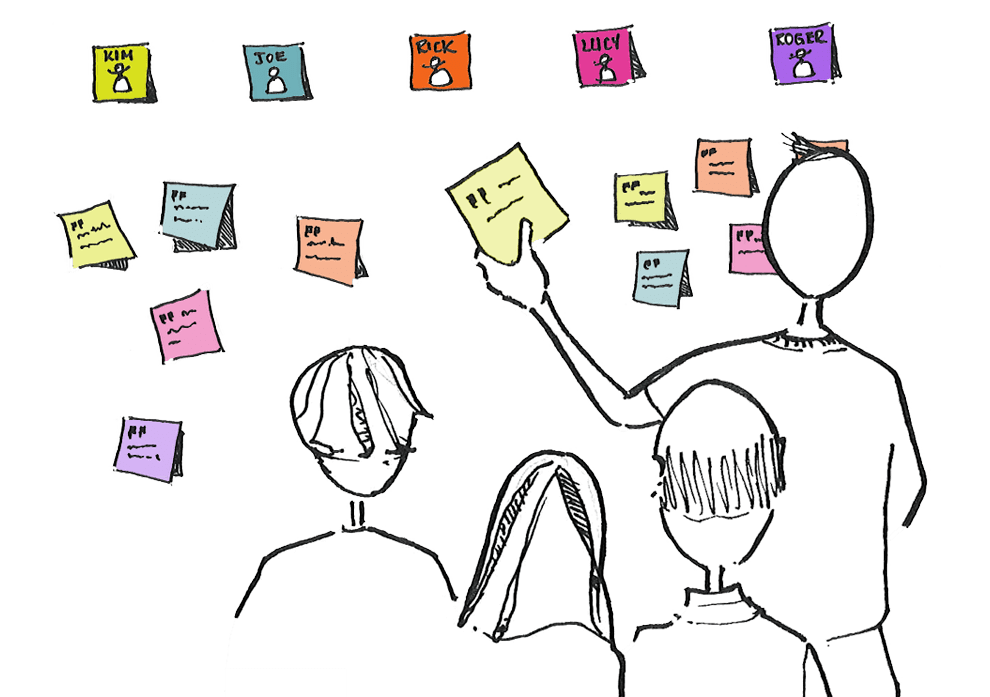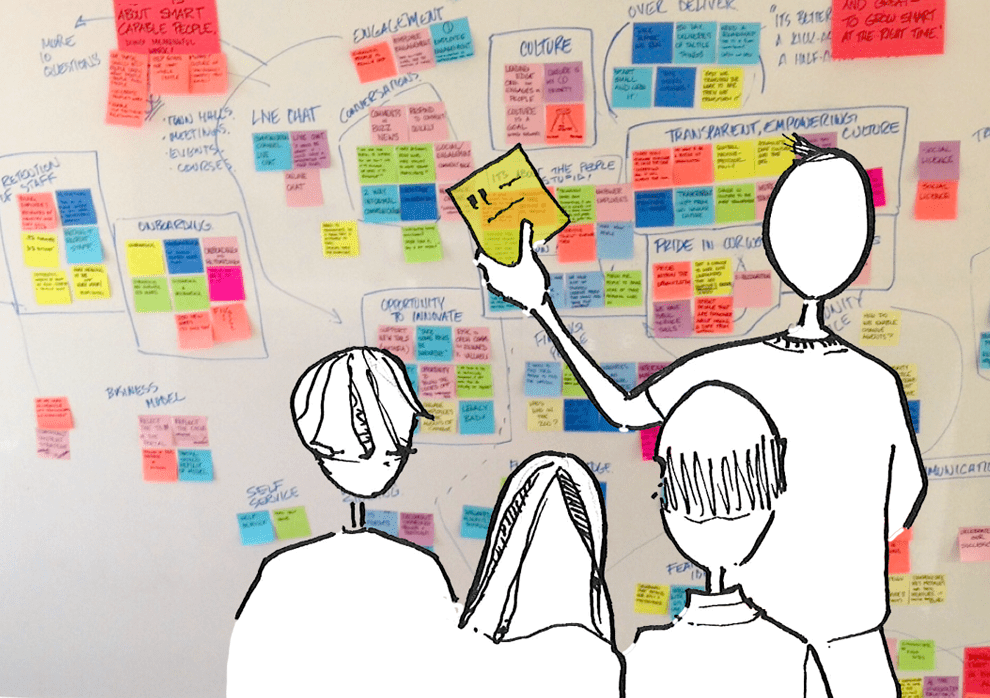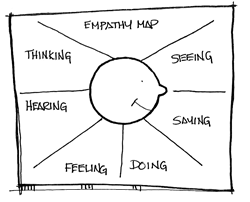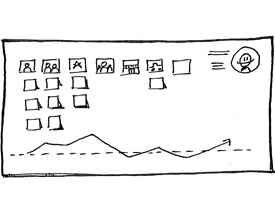After you’ve collected loads of data, information from key stakeholders, and end-user observations, how do you set a compelling direction that will help the team stay focused and moving toward the same goal?
Insights to principles
It’s not always easy to involve outside groups in the nebulous, grey fuzzy space that surrounds the period just after the research stage of a project, but it’s worth it.
We often begin by going through all of our interview notes and listening lab observations to pull out key themes and quotes onto different coloured sticky notes. Each stakeholder is represented by a different colour.

This provides a great opportunity to involve our client teams in our messy problem solving space to help us analyze raw findings from the research phase and come up with themes that can guide the design of the solution. Clients have said this takes a bit of the mystery away from how we arrived at recommendations, creates a unified goal, and furthers a shared understanding of the evidence and rationale.
In working directly with clients to process and formulate the research information, we create stronger ownership of the recommendations and design direction. Everyone becomes an advocate within their organization for the vision.

Create design principles
Next, these themes are transformed into guiding principles to create the design direction. This is what helps the team move from discovery to implementation. These are overarching guiding principles that align with the strategic business objectives; the sort of things a portal has to do above all else.
The secret is to make these principles visual, memorable, and sticky so they’re not easily forgotten. You want everyone on the team, including client stakeholders, to know them inside and out.
For example, these are a few guiding principles that came out of a recent employee portal engagement:
![]()
- One organization
- Globally-recognized best workplace
- The right information at the right time
- Never too remote
- Connecting people to people
More tools that help to inform and create a compelling and memorable design vision
Empathy maps

Instead of creating polished user personas, empathy maps lightweight, more collaborative way to dig into a person’s motives, feelings and experiences. Using the template found in the book “Game Storming: A toolkit for innovators, rule-breakers and changemakers,” we create empathy maps based on listening lab info, research and the input of our key stakeholders. These aren’t as polished and refined as a traditional persona. Instead, they are more of a working document that helps the design team better understand everything a person is experiencing, feeling, and thinking to enable everyone to consider how a design may impact each person’s experience.
Service blueprints
As organizations grow, they tend to have more and more siloes. As a whole, the organization offers a single service but each area independently contributes only part of that offering. Over time these areas or departments lose sight of the holistic experience as their focus is really about a single task or function.
To overcome this, we recommend gathering representatives from each area of the business to build a holistic picture of the service the company offers and wishes to see reflected in the solution. This service design blueprint exposes all of the front and backstage actors as well as the systems that the organization needs to complete the action. Service blueprints are another effective way to surface opportunities, gaps and or redundancies that span departments.
 Experience maps
Experience maps
We also take a look at each user personas experience, mapping it from start to finish—the highs and lows and the various touchpoints they have with a particular actor to complete a task. This really helps us understand how and why different people are experiencing a service, system, or process and where the pitfalls and opportunities are.
All of these tools can prove extremely insightful for organizations as they think about the people using their portal, their experience, and the people and systems who deliver it.
A strong vision sets your team on the path for success
Setting a compelling design vision that is rooted in research and is aspirational drives a design that the whole team can work collaboratively towards. To keep this vision top of mind, tie the design principles into any project roadmaps and remind the team at every opportunity what you are ultimately trying to achieve.



.jpeg?bc=white&la=en&mw=416&modified=20251202191043&hash=E64AA9DFFAE8D1AC27890831F714D5B0FA2FEBB2)

